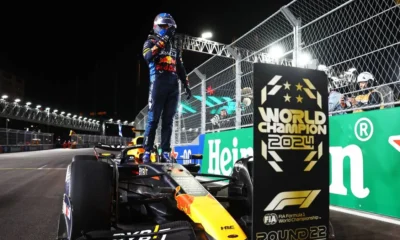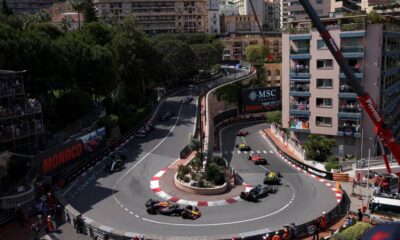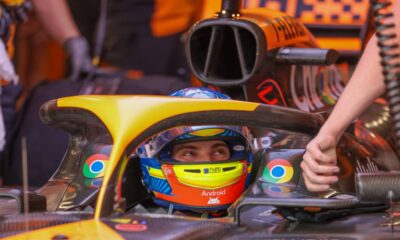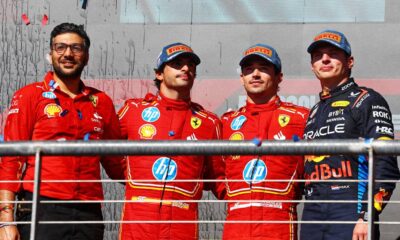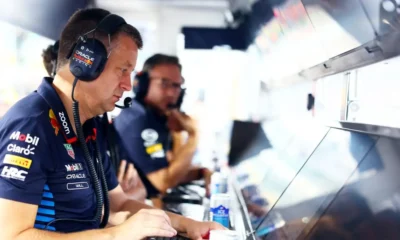Motorsport
Kubica’s huge crash, a pit crash or Jenson Button’s amazing pursuit: what has the Canadian GP had to offer in its history?
In its history, the Canadian Grand Prix has already offered many dramatic moments, beautiful duels and overtaking manoeuvres, but also some terrible crashes. What makes the race in Canada so special and what is its story?
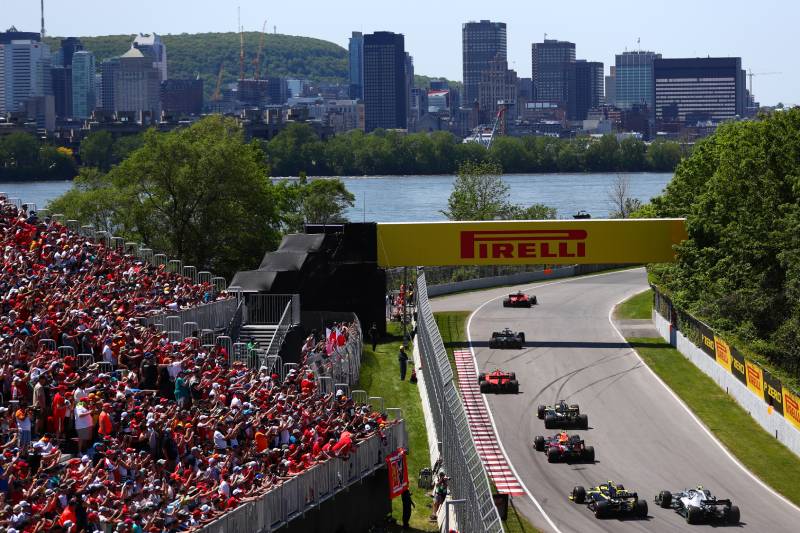
In its history, the Canadian Grand Prix has already offered many dramatic moments, beautiful duels and overtaking manoeuvres, but also some terrible crashes. What makes the race in Canada so special and what is its story?
The Canadian Grand Prix has been on the Formula One calendar since 1967, with the first winner being Australian Jack Brabham. The first Formula One World Championship race in Canada was hosted by Mosport Park – a 3.956km circuit located about an hour from Toronto in Bowmanville, Ontario.
The following year, however, the F1 championship moved to Le Circuit Mont-Tremblant in Québec, with the two race tracks alternating in terms of hosting the Queen of Motorsport race.
However, this arrangement did not last long, specifically until 1971, when the Grand Prix venue moved back to Bowmanville and remained there until the 1977 season. Although in 1975 the race was cancelled, due to financial disagreements.
Subsequently, two things then decided that Formula One would move elsewhere. The track was very bumpy and F1 became concerned about its safety. During the first practice session in 1977, Ian Ashley overturned and crashed into the TV tower. Fortunately, after a lengthy process, he was rescued, although Ashley suffered serious injuries.
The then main sponsor of the Canadian Grand Prix, Labatt, was very concerned about the viability of the race in a small town and in the long run it no longer made sense to the main sponsor. In short, Formula One already needed plenty of access roads, hotel accommodations and ideal transportation.
The move to Montreal
The Canadian Grand Prix then found its home in Montreal. However, it wasn’t Montreal that was first considered to host the F1 race, but Toronto. The race circuit was then to include a city boulevard called Lakeshore Boulevard.
Formula One was also to have a stadium for the MLB team Toronto Blue Jays. Labatt managed to convince F1 management, but the city council rejected it.
And so Montreal came forward with a proposal to build a race track on Ile Notre-Dame, an island in the St. Lawrence River east of downtown – designed by British engineer Roger Peart.
In addition, the island of Notre-Dame was created for the 1967 World Expo 67. Montreal also used the island for the 1976 Olympics, and it was this major sporting event that gave a number of clever minds an idea that they turned into reality.
Circuit Ile Notre-Dame, as the official name of the circuit was, saw its first race in 1978 and it was then that a spectacular story was born. The inaugural Grand Prix at the new venue was dominated by Canadian driver Gilles Villeneuve in front of 70,000 spectators and, as we all know today, the circuit still bears his name today.
Villeneuve remains the only Canadian to win a domestic Grand Prix. This is an achievement that continues to this day.
Gilles Villeneuve’s circuit – home of the Canadian Grand Prix
Today, the Circuit Gilles-Villeneuve measures 4,361 kilometres and the race here is normally scheduled for 70 laps, during which the drivers will cover 305 kilometres.
Valtteri Bottas holds the record for the fastest lap of the race at the Montreal circuit. The Finnish driver clocked a time of 1:13.078 in 2019.
The most victories in the Canadian Grand Prix were scored by two drivers, two undisputed legends not only of Formula 1, but of motorsport as a whole – Michael Schumacher and Lewis Hamilton. The German legend dominated the Canadian event in 1994, 1997, 1998, 2000, 2002, 2003 and 2004.
The seven-time British champion has also celebrated the Canadian championship seven times, namely in 2007, 2010, 2012, 2015, 2016, 2017 and most recently in 2019.
Brazilian Nelson Piquet has three wins to his name, while five drivers – Jacky Ickx, Jackie Stewart, Alan Jones, Ayrton Senna and Sebastian Vettel – have two wins each. As far as teams and races in the Formula One World Championship are concerned, McLaren has rejoiced the most times in Canada. Thirteen times.
Twelve victories for Ferrari, and seven times the Canadian Grand Prix has been won by Williams. Mercedes has only four wins, Red Bull two.
Wall of Champions
The Wall of Champions, by its English name, is one of the most famous corners in the entire World Championship. This is due to the accidents of former world champions.
In the 1999 Canadian Grand Prix, three world champions – Schumacher, Jacques Villeneuve and Damon Hill – crashed into the wall, which still had the inscription Bienvenue au Québec (Welcome to Québec).
But the Wall of Champions also claimed other drivers – 2009 world champion Jenson Button, four-time champion Sebastian Vettel and many others.
The Canadian Grand Prix is a special but also ruthless race
The Canadian Grand Prix has delivered a lot in its history, you can see the five most dramatic moments for yourself in the attached Twitter post below.
Formula 1 put Robert Kubica’s huge crash in 2007, when the Polish driver was racing for BMW Sauber, at the top of the list. F1’s second most shocking moment was the retirement of Nigel Mansell, who fought for the title with the legendary Senna in the 1991 season.
His Williams retired on the last lap of the race, leaving Nelson Piquet to take the victory, while Senna won the title that year.
In third place is Jenson Button’s absolutely breathtaking pursuit. The British driver did not start the race well at all eleven years ago. First he collided with his teammate Hamilton, then he collided with Felipe Massa’s Ferrari and had to pit. He also incurred a penalty and was last after a few laps.
This Grand Prix also went down as one of the longest in Formula One history, lasting over four hours. Button fought his way back during the race despite the highly variable conditions, still catching the leading Vettel in the Red Bull at the infarct end. He crossed the finish line first and took the win.
In 1998, the Grand Prix offered two starts. The first, a classic, ended in a mass crash, with Jarno Trulli and Alexander Wurz crashing most seriously. The race was therefore stopped and then restarted. But the second start also brought more accidents, and only ten drivers out of twenty-two finished the seventh race of the season!
The fifth moment in the F1 video above is a crash in the pit lane, caused by Hamilton. He didn’t reckon that Kimi Räikkönen in the Ferrari had to wait for the green light and crashed into the back of his car.
In the previous two years, the Canadian Grand Prix did not feature on the Formula One calendar. First, due to the coronavirus pandemic, it simply didn’t fit into the World Championship last year. So what will we see this time and what kind of victim will the Wall of Champions choose this year?
Sources

